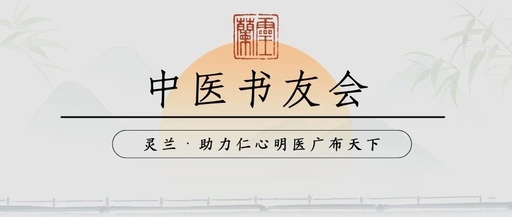
Chinese Medicine Book Club Issue 1930
Daily updates to accompany the growth of TCM practitioners
IIntroduction:Aconite (Fu Zi, 附子) is recognized as one of the “Four Major Medicinal Herbs” in Traditional Chinese Medicine (TCM) (alongside Ginseng, Gypsum, and Rhubarb), highlighting its significant role in TCM. However, the use of this herb requires caution among clinical practitioners, as improper handling can lead to poisoning. What are the causes of poisoning? The author, drawing from years of clinical experience, identifies five key reasons. (Editor: Yan Qifeng)

Five Causes of Aconite Poisoning
Author: Cui Guibo
Having recently entered the medical field, I have frequently used Aconite in treating various internal medicine conditions, yielding numerous experiences and lessons. Here, I will discuss the five major causes of Aconite poisoning based on documented cases.
1. Decoction Time
Aconite should be decocted for at least one hour, regardless of the dosage, to reduce toxicity; or the decoction should be boiled for over one hour. Even for formulas that should not be boiled for long, such as those for releasing the exterior or purging, Aconite should be decocted first. Patients often forget medical advice, especially in rural areas where there is insufficient understanding of Aconite poisoning and limited time for decoction. Practitioners must emphasize this repeatedly. In the eight recorded cases of Aconite poisoning, six were due to this oversight.
He X, female, 30 years old, farmer, diagnosed on March 3, 1990. Palpitations were due to insufficient heart Qi and blood stasis. After taking Xuefu Zhuyu Decoction with Astragalus and Aconite for seven doses without toxic side effects, the eighth dose was decocted for less than one hour, leading to a burning sensation in the mouth and numbness of the tongue upon ingestion. About ten minutes later, she experienced nausea and vomiting, worsening palpitations, total body numbness, and loss of consciousness, with convulsions. Local health services were ineffective, and she was urgently transferred to the county hospital, where cardiac arrest occurred. After aggressive treatment including defibrillation, she was stabilized and diagnosed with “Aconitine poisoning.”
2. Accumulation of Toxicity
Aconite is toxic, with a common oral dosage of 3-10 grams, and a large dose of 30 grams. However, prolonged use of large doses can lead to severe toxicity, especially in elderly, weak, or chronically ill patients with impaired excretion, making them more susceptible to toxic accumulation.
Du X, female, 60 years old, farmer, diagnosed on November 9, 1987. Suffering from Yang deficiency and low back pain, she did not respond to combined TCM and Western treatments. After taking Ma Huang Fu Zi Xi Xin Decoction with Aconite (9 grams) for two doses, and then Shen Qi Wan modified with Si Ni Decoction (30 grams of Aconite), she presented with drowsiness, cold limbs, and restlessness at night, with a flushed face. This indicated a Yin excess and Yang deficiency pattern. She was directly given Aconite Decoction with dried ginger (45 grams of Aconite), decocted for over one hour. After taking the first two decoctions without side effects, she experienced headache and tongue numbness after the third decoction, followed by loss of consciousness, drooling, vomiting, sweating, and facial twitching. An urgent administration of 30 grams of licorice was given, and she recovered within two hours.
3. Compatibility of Herbs
Throughout history, there has been extensive research on the compatibility of Aconite. In addition to known incompatibilities, it is often combined with ginger, dried ginger, and licorice to mitigate Aconite’s harsh properties while enhancing its ability to revive Yang, warm the interior, and alleviate pain. Special attention should be paid to compatibility, especially when using large doses, to avoid poisoning.
Qin X, female, 60 years old, farmer, diagnosed on June 18, 1986: She presented with heavy swelling and coldness in the knees, unable to walk, with a pale tongue and thin, submerged pulse. Treated for cold-damp obstruction, she was given a modified Yi Yi Ren Decoction with licorice and added Wei Ling Xian. The formula included 12 grams each of Chuan Wu (川乌) and Cao Wu (草乌), which were increased to 15 grams after three doses. After continuing for three more doses, the dosages of Chuan Wu and Cao Wu were increased to 18 grams. Following the medication, she experienced total body numbness and fainting, but gradually recovered within two hours. Afterward, the dosage of Ma Huang was reduced and licorice was added, and she continued for ten doses without side effects.
4. Patient’s Constitution
The body’s resistance to disease is best in young and healthy individuals. The severity of reactions to Aconite poisoning varies: younger, healthier individuals have stronger tolerance and faster recovery times; conversely, elderly, weak, and chronically ill patients experience more severe poisoning and complications.
Yuan X, male, 57 years old, retired driver, diagnosed on March 5, 1990. He had a history of cough and asthma, which worsened after a cold. Treated with Yang He Decoction combined with Zhen Wu Decoction, he showed significant improvement. However, he experienced dryness and thirst, with neck stiffness. The formula included 9 grams of Aconite, decocted for about half an hour. After taking the medication for ten minutes, he experienced tongue numbness and difficulty speaking; after half an hour, he had numbness in his limbs and difficulty walking; after one hour, he experienced total body numbness, difficulty breathing, agitation, sweating, nausea, and vomiting, and was urgently transferred to a local hospital. He was conscious but experienced total body numbness, with weak heart sounds and irregular rhythm, and blood pressure could not be measured. He was immediately given oxygen. After five minutes of intravenous sodium bicarbonate, he experienced respiratory arrest and loss of consciousness, with unequal pupil size and loss of light reflex, followed by convulsions and cardiac arrest. Despite aggressive resuscitation efforts, he unfortunately passed away.
5. Quality of Processing
In my nearly ten years of clinical practice, I have used Aconite countless times and have learned heavy lessons regarding poisoning due to the quality of Aconite processing. Among the eight cases of Aconite poisoning, three occurred in April, May, and June of 1989, all from the same batch of Aconite. In March and April of 1990, three more cases occurred from the same batch. In contrast, Aconite from other batches used before and after these incidents rarely caused poisoning. This indicates that the quality of Aconite processing is a significant factor in Aconite poisoning. It often interacts with the previous four factors, and any clinical oversight can lead to Aconite poisoning.
Zhong X, male, 33 years old, farmer, diagnosed on April 4, 1990. He worked in the rain and was exposed to wind and dampness. He felt cold, with heaviness in his head and body, pale red tongue, thin white greasy coating, and a slippery pulse. He was given a modified Qiang Huo Sheng Shi Decoction, but the effect was poor. His tongue and pulse remained unchanged, so he was treated with a modified Qiang Huo Sheng Shi Decoction with licorice, adding Fang Ji, Cang Zhu, Gui Zhi, and Aconite (6 grams), decocted for half an hour. After taking the medication for 20 minutes, he experienced numbness in his face, lips, tongue, and limbs, making walking difficult. All symptoms resolved after two hours. I instructed him to decoct the remaining two doses of Aconite for over one hour, and he experienced no numbness or other symptoms afterward.
In conclusion, there are many causes of Aconite poisoning. In addition to the five discussed above, there are also issues such as mismatched symptoms and fear of medication. To use Aconite safely in clinical practice and avoid poisoning, it is essential to conduct detailed differentiation and treatment, ensure the quality of processing, pay attention to herb compatibility, emphasize decoction methods, and consider the patient’s constitution and the accumulation of toxicity. By doing so, practitioners can avoid fear of Aconite and help patients achieve longevity.
Recommended Reading
In Chengdu, they fear Ma Huang; in Jiangsu, they fear Gypsum; in Shanghai, they fear Aconite.
Come and comment: How do you handle Aconite poisoning?
|
I Copyright Statement
I Submission Email [email protected] |


Good to see everyone!

